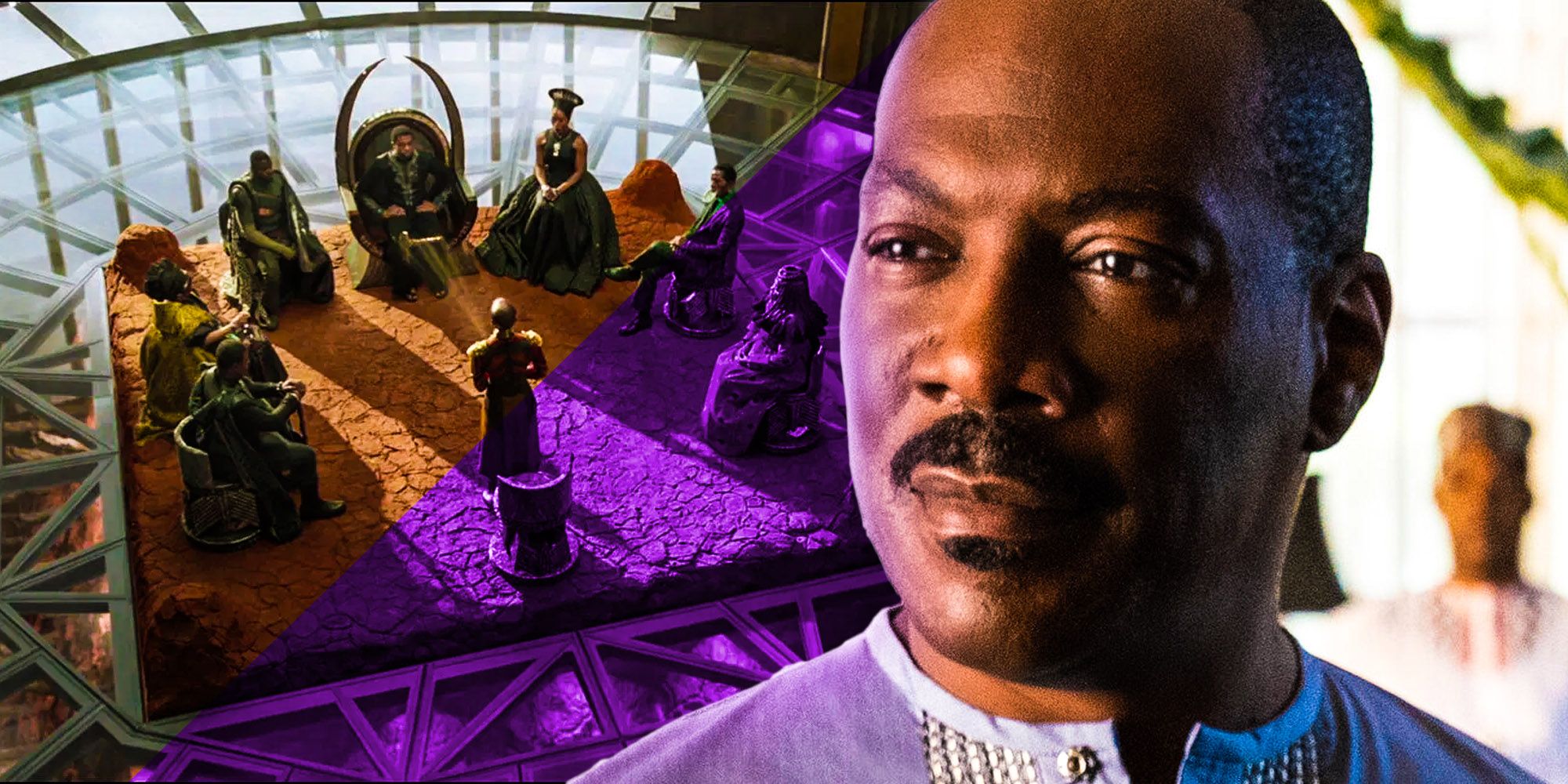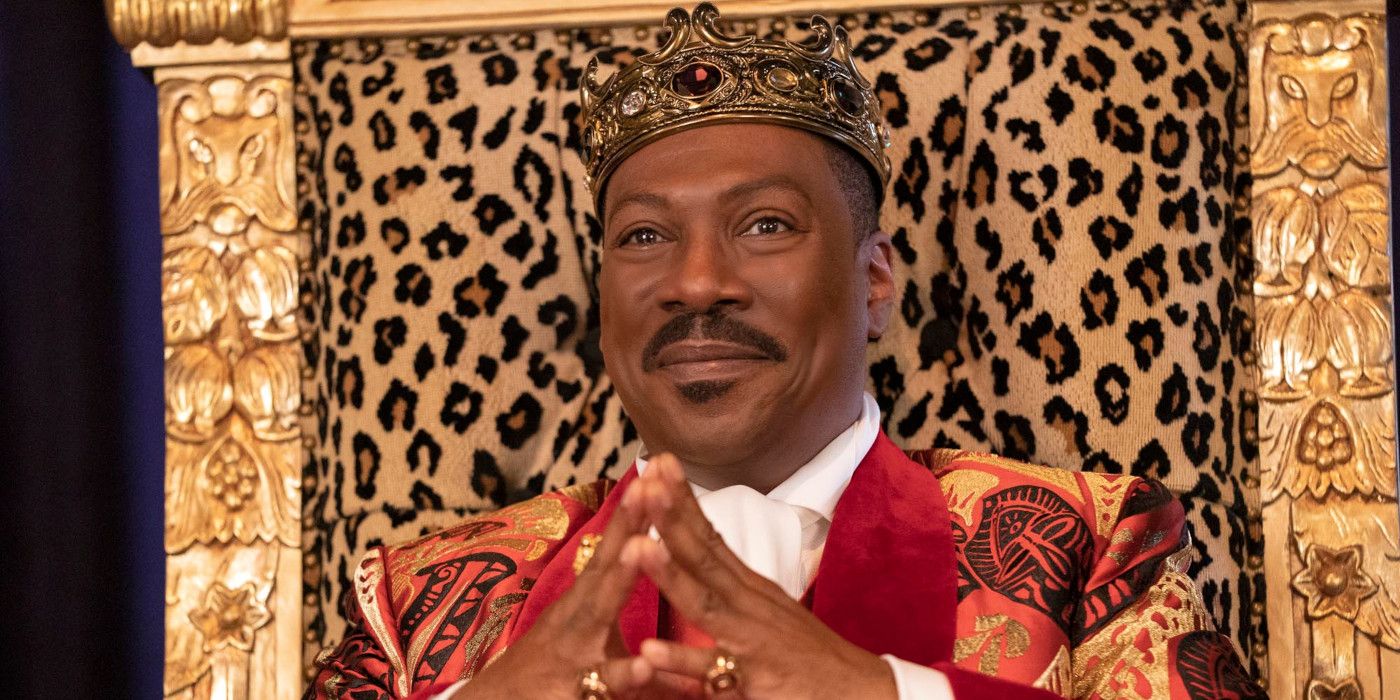Coming 2 America’s Black Panther reference highlights its biggest flaw. The film — a sequel to the 1988 comedy Coming to America, which follows Prince Akeem’s search for love in Queens in a bid to avoid an arranged marriage in his home country of Zamunda — throws in a reference to Wakanda, which Eddie Murphy’s Akeem (now king) confirms is a fictional place within the world of Coming 2 America. While both Wakanda and Zamunda are fictional African countries, Coming 2 America upholds stereotypes about Africa, a continent that is still treated like one large, homogenous place instead of richly diverse and multi-faceted.
The original film, now over thirty years old, also included a few stereotypes about Africa. While it was wonderful and important to see African characters who were wealthy instead of downtrodden, the Joffer’s palace grounds consisted of elephants and lions bustling about as though humans and animals peacefully coexisted. However, most of the action and story took place when Akeem and Semmi, his friend and royal aid, came to Queens. With little else shown of Zamunda beyond the palace walls, Coming to America wasn’t nearly as offensive or stereotypical in its depiction of the African continent as its sequel.
Coming 2 America worsens the stereotypical portrayal of Africa due to the story being primarily set in Zamunda. The royal lifestyle is still as decadent as ever, with Akeem and Semmi still being washed by the palace’s royal bathers, with servants present at all hours of the day to care for the family’s every need. The palace even has its own hair salon. However, the story rarely reveals what’s happening beyond the palace walls. Meekah, Akeem and Lisa’s eldest daughter, watches the news to stay up-to-date, but it becomes increasingly clear that Zamunda has not progressed much since the first film. Women are forbidden from ruling the country and they’re also not allowed to own businesses.
The sequel also introduces the fictional nation of Nexdoria — yes, that is a play on the words “next door” — a country ruled by General Izzi (Wesley Snipes). The character is basically a warlord who takes all of the riches to himself, is heavily militant, and likely treats his people very badly. Nexdoria also leans into the stereotype that African peoples are all impoverished, which upholds the negative way the continent has been portrayed in American media for decades. Zamunda’s portrayal in Coming to America worked because it was, at that point in time, a refreshing take on a continent that had consistently been ignored, pigeonholed, or treated with little deference.
However, the sequel leans too far into the stereotypes rather than upend them, furthering the negative clichés. Black Panther, at the very least, managed to subvert certain ideas, showcasing a nation that was rooted in tradition, but which used its resources and technology to help the country’s citizens. The film engaged with characters beyond T’Challa, showcasing him and his family as members of a larger society. Women were also in positions of power and control, whereas Coming 2 America’s gender norms and policies are still sexist (until Akeem finally changes this in the end). So, by mentioning Wakanda at all, the sequel makes its flaws even more noticeable. To be sure, both films center fictionalized African countries, which therefore creates a limited scope. However, one can hope that the future will bring focus to real African nations from creators who understand the area and won’t resort to stereotypes to tell stories.


